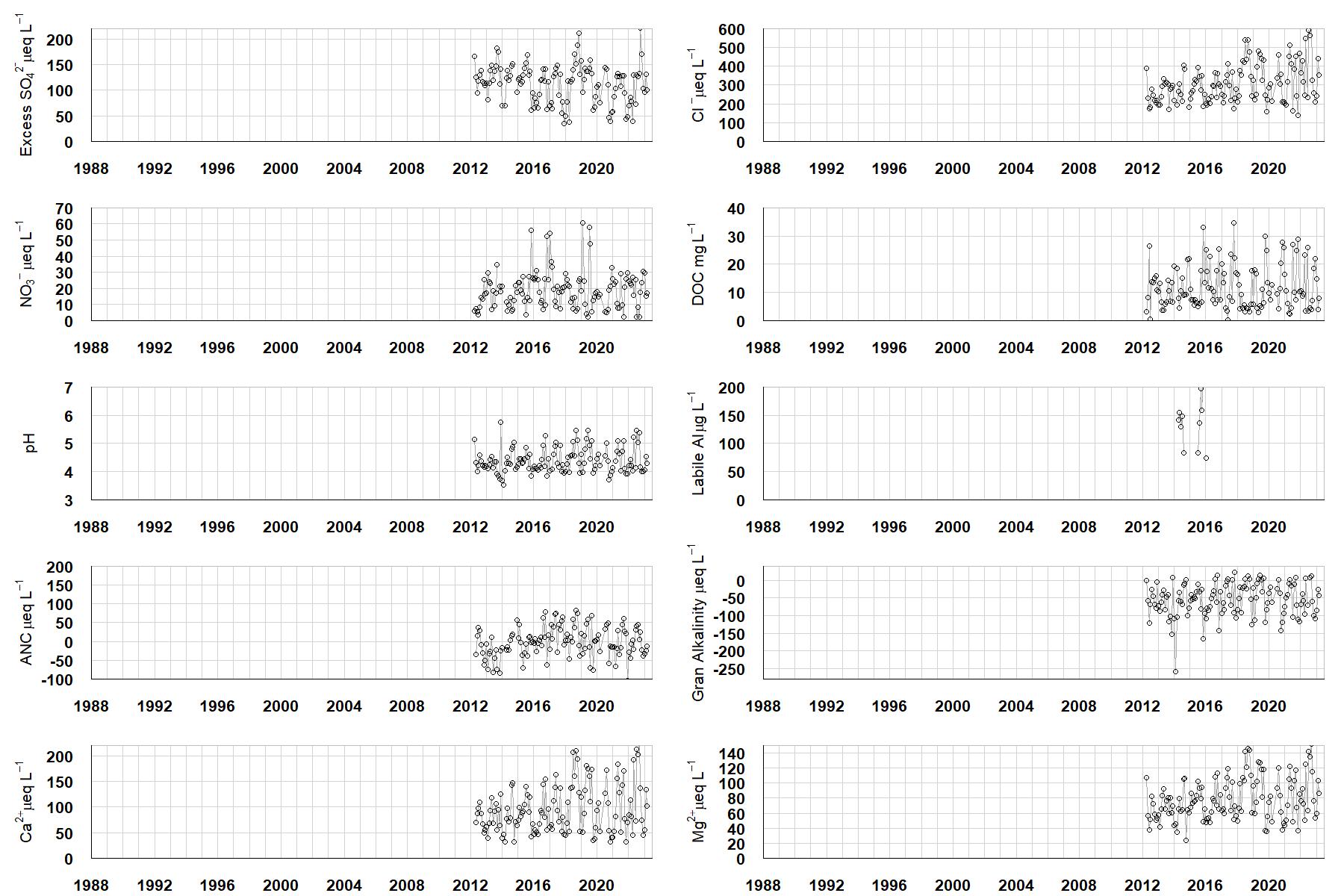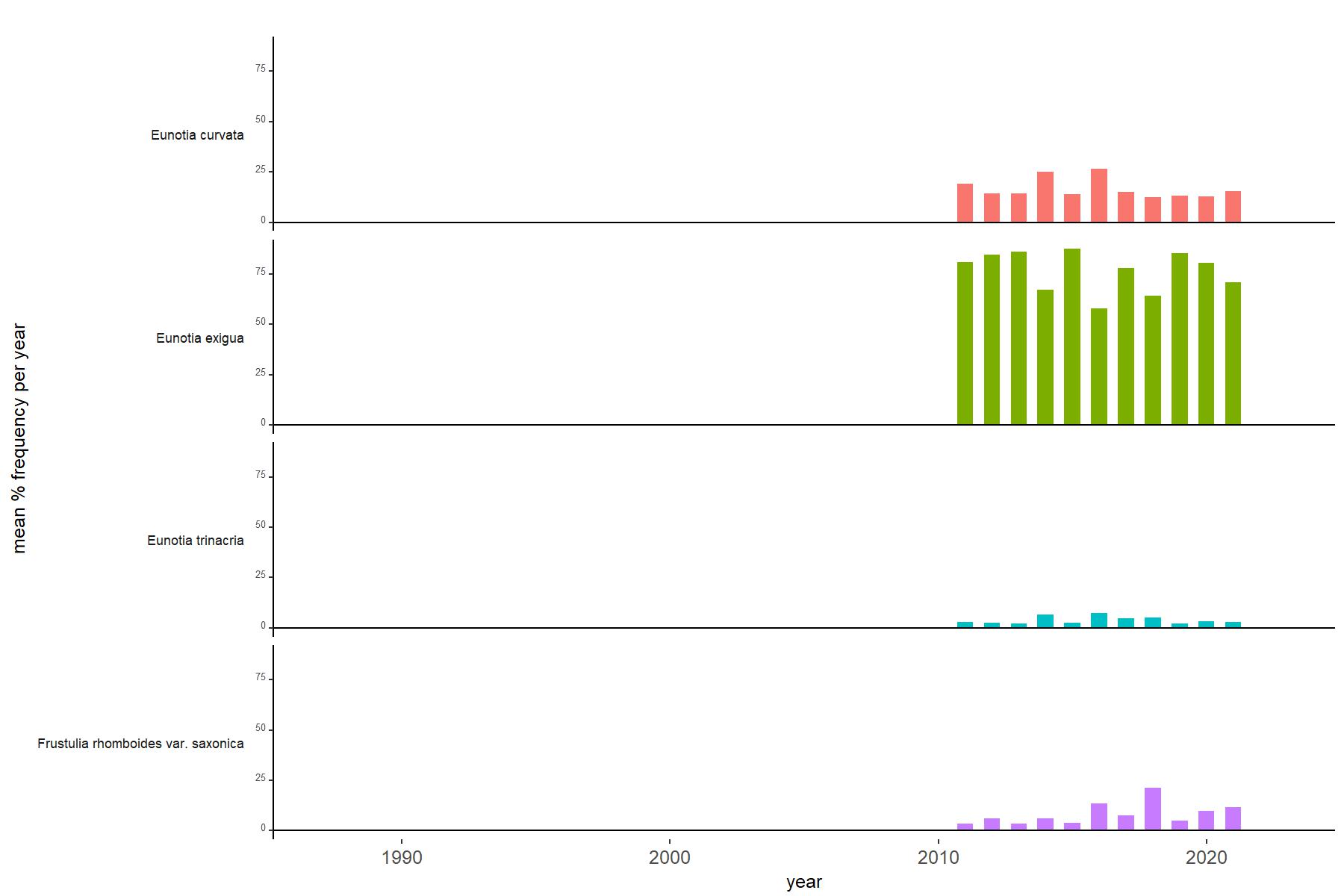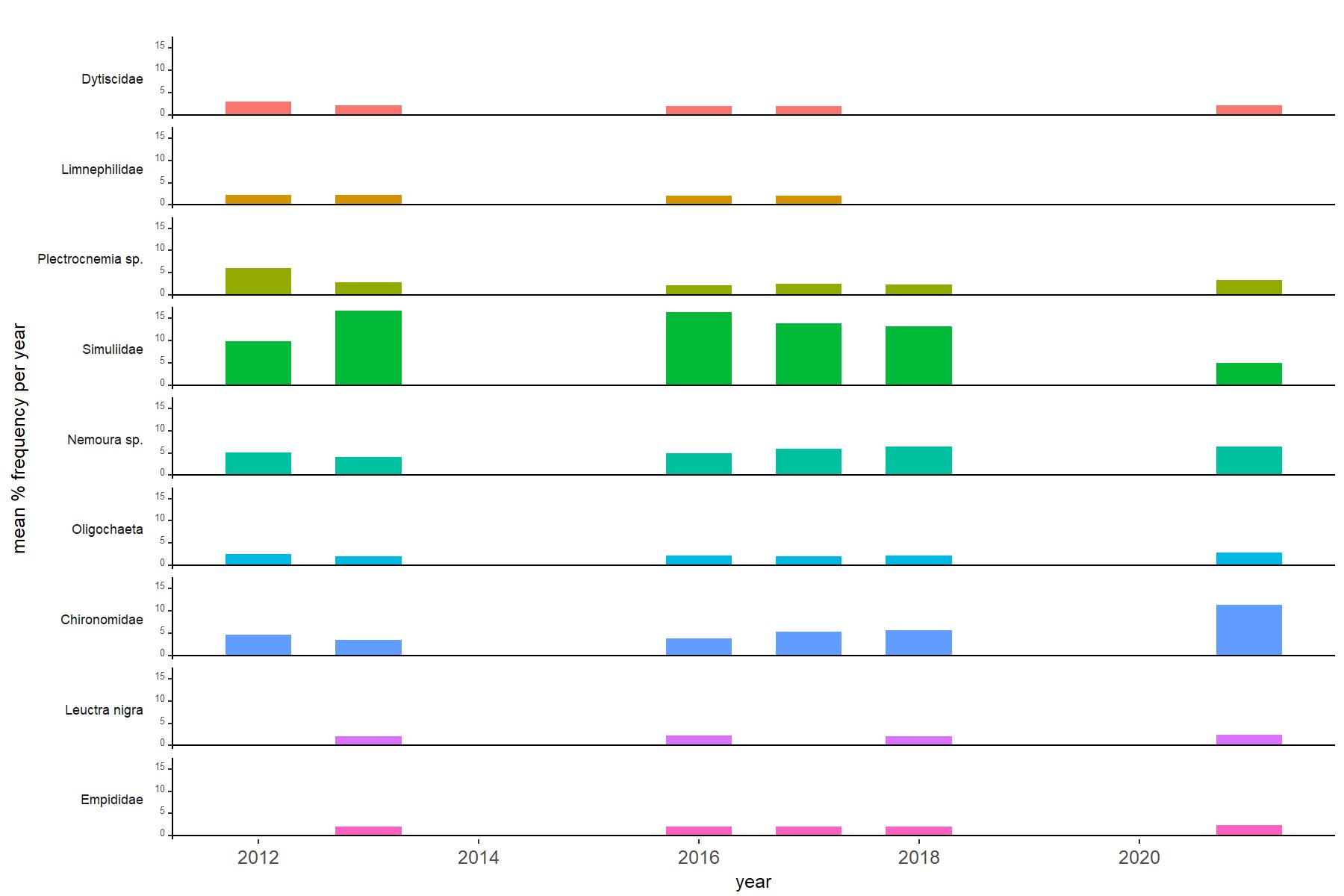
- Location: North York Moors, Yorkshire
- Type: Stream
- Catchment area: 77 ha
- Annual rainfall: -
- Sampling station altitude: 299 m
- Maximum altitude: 432 m
Situated in the North York Moors, Danby Beck was added to the Network in 2011, when systematic chemical and biological sampling commenced. Surface water acidity data however has been collected since 1990 by Environet, a local volunteer group. The long-term historic pH record plus the site's geographical location in an area of high acid deposition, not originally represented within the original UK Acid Waters Monitoring Network, led to the decision to incorporate Danby Beck into the network.


